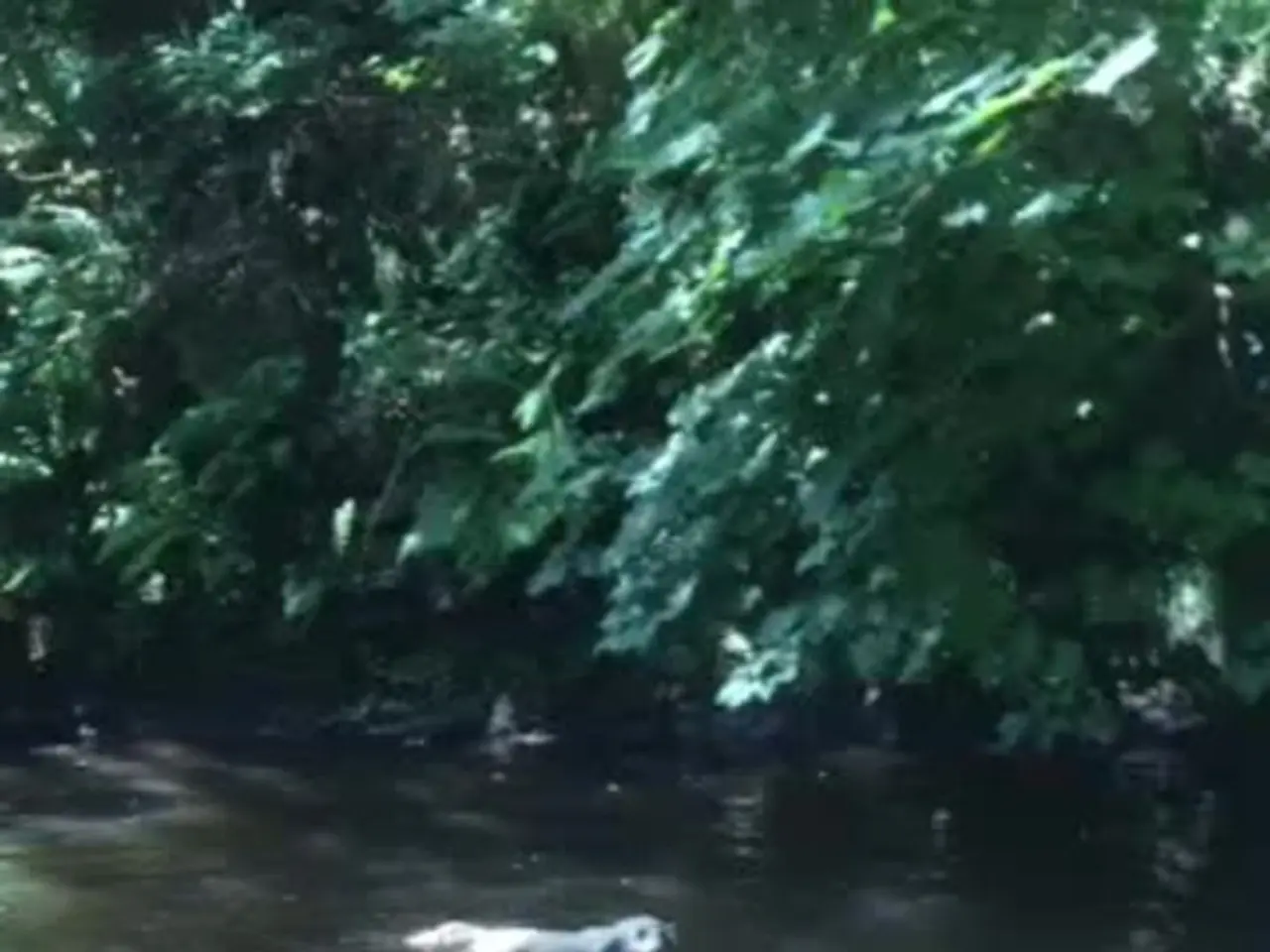Venice's Canals Previously Offered Bliss for Dogs, Now Pose Threats Instead
In the heart of a bustling city, the Venice Canals remain a magical oasis, teeming with life and offering a unique urban escape. However, recent findings have raised concerns about the safety of this popular spot, particularly for our four-legged friends.
The city has taken steps to alert residents and visitors about potential danger from harmful algae in the water. Warning signs have been posted, and tests conducted by the California Water Boards and the Los Angeles Water Quality Control Board have confirmed the presence of toxins like microcystins, anatoxin-a, and cylindrospermopsin in the water, algae, and scum.
These algal toxins are suspected to be the cause of a cluster of dog illnesses and deaths in the area. Affected dogs have shown symptoms consistent with algal toxin poisoning, including sudden and severe lethargy, weakness, lack of coordination, vomiting, tremors, seizures, collapse, and in some cases, death.
While a definitive causal link has not yet been established by health authorities, other potential causes such as rodent poison or other environmental toxins have been considered. The detection of these specific algal toxins, however, positions the harmful algae bloom as the leading waterborne source of the problem.
Public health findings and investigations highlight the presence of these toxins in canal water samples, symptoms in dogs matching toxin exposure effects, and ongoing investigations with data collected from affected dog owners. Precautionary public health advice includes avoiding pets' contact with canal water, scum, algae, and prohibiting swimming or fishing in the canals.
Despite these concerns, the canals continue to be a thriving habitat. A brood of 10 ducklings has been observed growing up this summer, and small fish can be seen leaping out of the water. However, it is crucial for pet owners to exercise caution when visiting the canals. Dogs should not enter or drink the water, nor should they eat, touch, or sniff algae, scum, or any debris near the water.
The Venice Canals Association is collecting data from affected dog owners to aid in the ongoing investigation. Anyone with a sick dog who suspects a link to the canals should immediately seek veterinary care for their pet.
As the city continues to monitor the situation, it's a reminder for all of us to appreciate the beauty of our urban landscapes while staying vigilant about the potential risks they may pose.
- In light of the suspected harmful algae bloom in the Venice Canals, the city has posted warning signs to alert residents and visitors about potential danger, particularly for pets.
- The California Water Boards and the Los Angeles Water Quality Control Board have conducted tests and confirmed the presence of harmful algal toxins like microcystins, anatoxin-a, and cylindrospermopsin in the water, algae, and scum.
- These algal toxins are suspected to be the cause of a cluster of dog illnesses and deaths in the area, with affected dogs showing symptoms such as lethargy, weakness, lack of coordination, vomiting, tremors, seizures, collapse, and in some cases, death.
- As a precautionary measure, public health authorities advise against pets entering, drinking, or swallowing the canal water, and prohibit swimming or fishing in the canals.
- The Venice Canals Association is collecting data from affected dog owners to aid in the ongoing investigation, encouraging anyone with a sick dog suspected to be linked to the canals to seek immediate veterinary care.
- While the Venice Canals continue to be a thriving habitat for various species, it is essential for pet owners and visitors to exercise caution when visiting, keeping pets away from the water, algae, scum, and any debris near the water.




